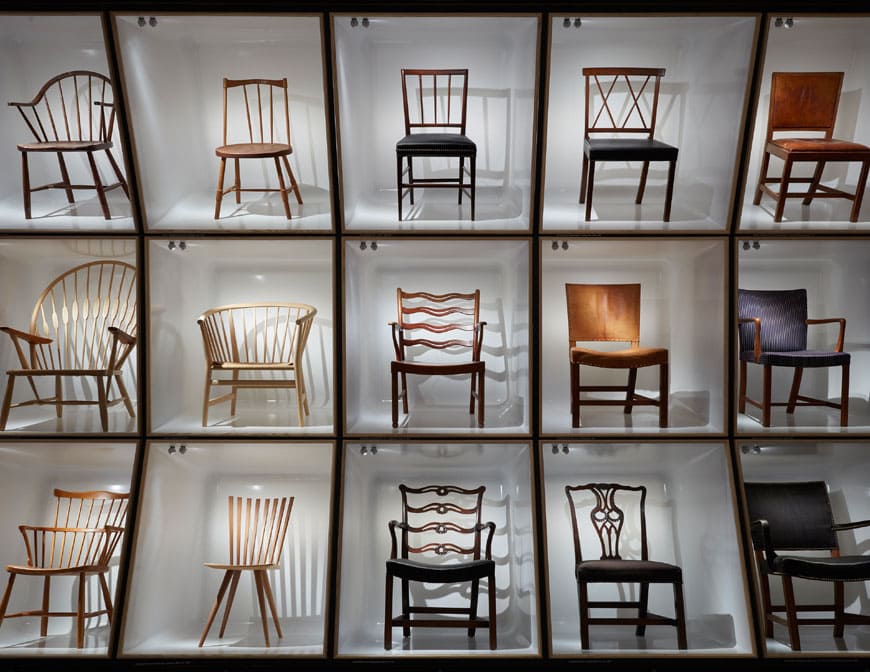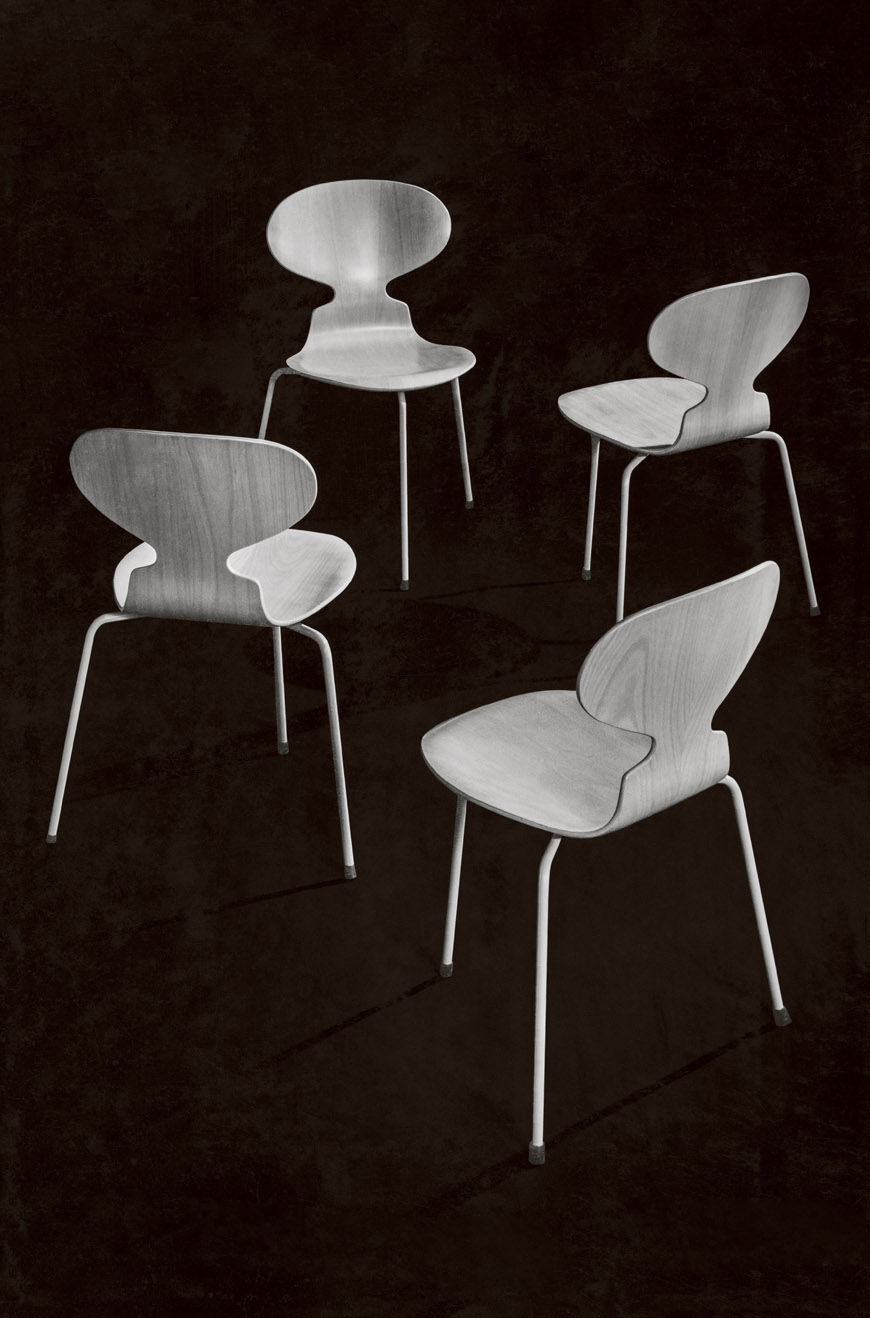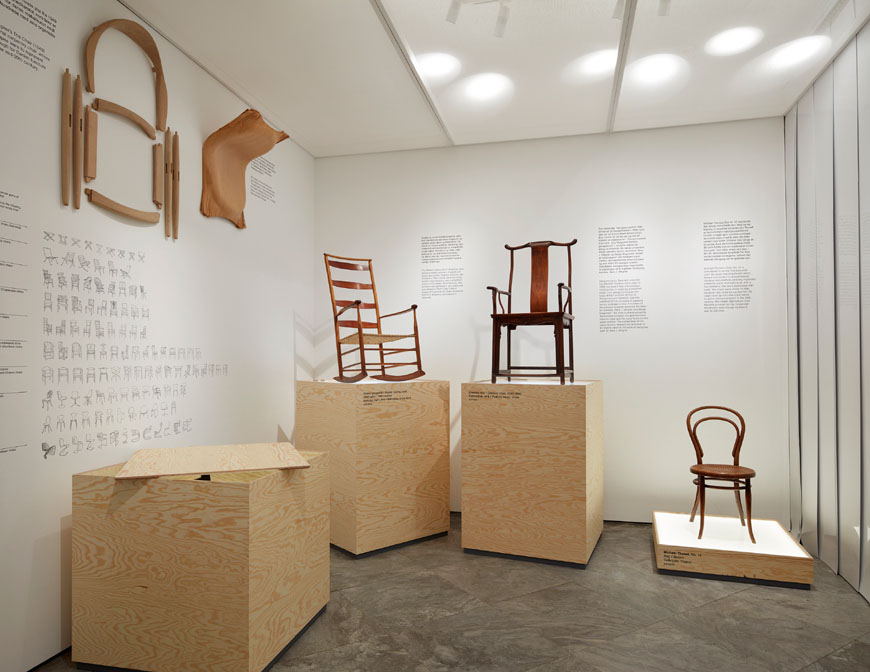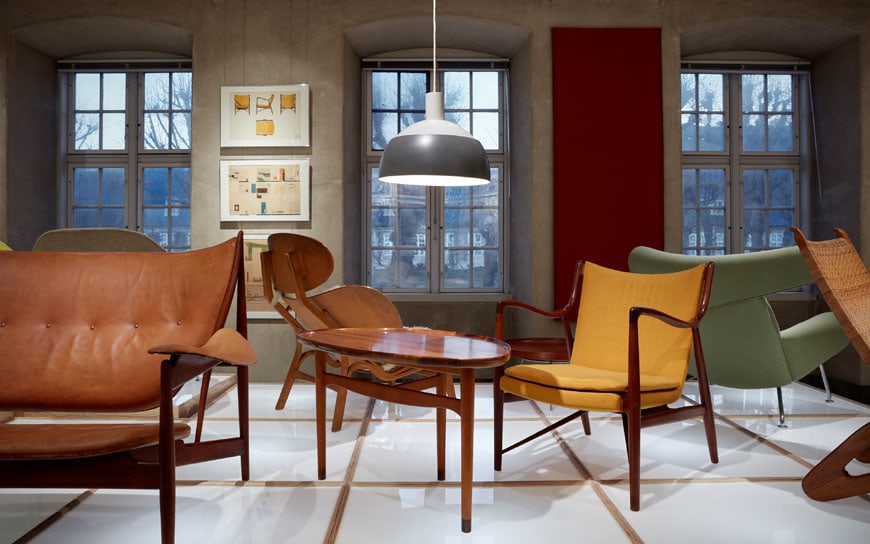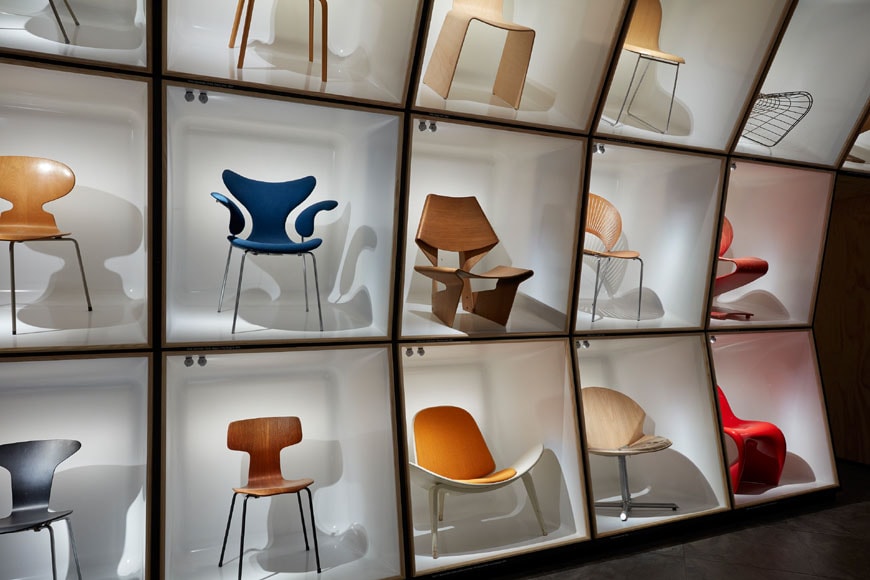All the Danish chairs at the Designmuseum Danmark
Images courtesy of Designmuseum Danmark and MoMA
“The Danish Chair. An International Affair” is the new section of the permanent exhibition of the Designmuseum Danmark dedicated to chairs. Photo courtesy of Designmuseum Danmark.
The Danish Chair, a permanent exhibition at the Designmuseum Danmark
The design of the chair in the 20th century
Mies van der Rohe once said that chairs are among the most difficult objects to design; since to create something that has to be at the same time light, strong, and comfortable entails so many problems and possible solutions that “It is almost easier to build a skyscraper than a chair”.
Perhaps that statement was a bit too extreme; yet, chairs are certainly among the most complex types of furniture because, more than others, their design requires solving ergonomic, technical, and structural issues.
That’s why we could somewhat tell the history of industrial design through the evolution of chairs from the mid-19th century to the end of the 20th century.
That history likely began in Vienna, in the workshop of a family of a carpenter, where, the first Thonet chair no. 14 was produced in 1859.
Subverting the established concept of furniture, which from exclusive soon became popular (over 50 million pieces of the chair were sold between 1859 and 1930), the Thonet company started making its wood furniture through a steam-bending process, thus dropping expensive woodcarving works, and joining the few parts of which the chair was composed of simple screws.
Therefore, this history is largely based on those innovations that emerged during the transition between the 19th and 20th centuries, on the research on forms and craft techniques – developed for example by the Wiener Werkstatte and the Glasgow School – and on the experimentation of new materials and manufacturing processes at the turn of the century.
If the Masters of Modernism, from the already mentioned Mies van der Rohe to Le Corbusier, fostered the success of chromed steel as a furniture material, Scandinavian designers revolutionized the design of wood chairs, as Alvar Aalto started doing in the ’30s with the bent plywood Paimio Chair.
In the following decade, Aalto’s bentwood furniture greatly influenced the work of other designers, both in Europe and the United States, from Eero Saarinen to Charles and Ray Eames – who developed chairs with a structure made of metal, and seat and back made in bent plywood (Organic Chair, 1940, and LCW, 1945) -, to Denmark’s Arne Jacobsen, who first designed the Ant Chair (1952), made of a single plywood shell supported by three tubular steel legs, and then the famous Series 7.
Arne Jacobsen, Ant Chair, 1952, photo Pernille Klemp, courtesy of Designmuseum Danmark.
The Danish furniture industry, which greatly developed during the Fifties and Seventies, is highly recognized for the strict collaboration between designers and manufacturers, as well as for being the epitome of a long-lasting woodcarving culture, made of extreme attention to materials and the environment.
Among the best-known Danish designers is Hans Wegner, who designed some of the most interesting chairs of the time such as the CH24 Y (1949) – the evolution of an earlier project inspired by the chairs of the Ming dynasty – and the Valet chair (1953). With the Valet chair, Wegner combines in a single object the functions of seating and furniture to hang clothes on before going to sleep.
Hans Wegner, CH24 Y chair, 1949. Photo Pernille Klemp, courtesy of Designmuseum Danmark
Hans Wegner, Valet chair,1953. Photo Pernille Klemp, courtesy of Designmuseum Danmark
The bentwood shell chairs designed by Saarinen, Eames e Jacobsen would influence the design of subsequent plastic chairs; with an intermediate passage marked by the use of fiberglass we see in the celebrated Chaise by the Eameses (1948), the first version of the Elephant stackable stool by Sori Yanagi (1954), and the Tulip chair by Saarinen (1955).
The advent of plastic polymers made the manufacturing of one-piece shells, initially modeled over metal support, much easier, thus freeing designers to investigate new chair forms.
The possibilities offered by the introduction of new types of, increasingly lighter and stronger, polymeric materials would lead, in the late 1960s, to the creation of audacious one-piece chairs, such as the Panton Chair – lightweight, stackable, colored, and fluid-shaped -, designed by the Danish designer Verner Panton in 1960 and released on the market in 1967 after a long technical development.
Verner Panton, Panton chair, 1967. Photo Pernille Klemp, courtesy of Designmuseum Danmark
The Danish Chair. An International Affair
Taking the cue from this fascinating history, in December 2016, the Designmuseum Danmark in Copenhagen added a new thematic section to its permanent exhibition. The section, entitled The Danish Chair, An International Affair, focuses on how chair design has become a world-recognized hallmark of Denmark.
The Danish Chair, installation view; photo Pernille Klemp, courtesy of Designmuseum Danmark
The new gallery has been conceived as a contemporary cabinet of curiosities, aimed to present at its best the evolution of this type of furniture during the 20th century.
The over 100 pieces on view are displayed in dedicated white boxes, arranged on three levels and slightly tilted toward the visitors to give the exhibits the best visibility.
Large sliding folders, reporting drawings, and technical information about each object, are placed between the boxes.
The Danish Chair, installation view; photo: Pernille Klemp, courtesy of Designmuseum Danmark
Together with pieces dating back to the early 20th century, the exhibition features models from the “Golden Age” of Danish design, produced between 1920 and 1970, along with chairs from international manufacturers.
Among the pieces on view are the Metropolitan Chair, designed by Aksel Bender Madsen and Ejner Larsen in 1949, the Shell Chair (1963) and the bizarre hanger-chair Valet (1953) both by Hans J. Wegner, the Ant Chair, and the steel-and-plywood Series 7 by Arne Jacobsen (1955), the revolutionary plastic monocoque Panton chair conceived by Verner Panton in the Sixties, and the more recent Trinidad, designed by Nanna Ditzel in 1993.
The Danish Chair, installation views; photo: Pernille Klemp, courtesy of Designmuseum Danmark.
Grete Jalk, the GJ Bow chair, 1963. Photo: Pernille Klemp, courtesy of Designmuseum Danmark.
All photos courtesy of Designmuseum Danmark. https://designmuseum.dk/en/

Opened in 1895, the Designmuseum Danmark in Copenhagen is the most important Danish museum exclusively dedicated to industrial design and applied arts

Copenhagen & eastern Denmark
copyright Inexhibit 2025 - ISSN: 2283-5474

